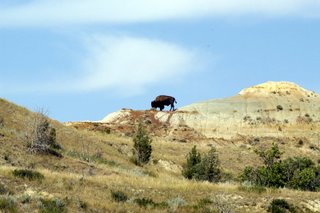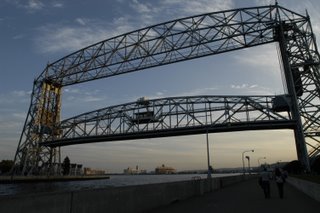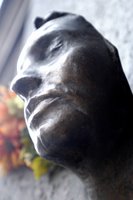
On Saturday last week, we were given the opportunity to take a bus trip to Terezin, a concentration camp and ghetto north of Prague. Terezin is unique among the concentration camps of WWII, in that an entire town was evacuated to create a ghetto for Jews from all over Europe. Some Jews remained in the walled-in town; others were transported out to the extermination concentration camps like Auschwitz. The Town also contains a prison, which was built 200 years ago as a fort. It housed political prisoners, or resistors to the Nazi movement, as well as Jews who did not obey the laws of the ghetto. Forty thousand Jews died in the prison, of starvation or disease. There were never any gas chambers in the Terezin prison.
Many of the photos that I took on Saturday are available here.
Our tour guide told us that 100 people were put into each bunk room, giving them only 45 cm each on the wooden beds. Originally the beds had mattresses, but they were quickly infected with fleas and were removed. The bunk rooms had no blankets and no heat with only one toilet and icy cold water. Each prisoner was given only one prison uniform. Dysentery, typhoid and TB were easily transmitted under these conditions.
Some of the smaller cells were used for Jews. In each of these rooms, 60 men stood upright, even when sleeping. If they lived more than 10 days, they were sent to Auschwitz anyway. The death rate for Jews was by far the highest among all of the prison population.
As an aside, cell one at Terezin housed Gavrilo Princip, the man who assassinated Archduke Franz Ferdinand in Sarajevo and started WWI. He survived here four years and then died of TB.
Each prisoner had a five minute cold shower once a week, and then they had to walk back to their cells through the cold air in the winter. Their uniforms were disinfected with steam only, no detergent.
Terezin was used as a model camp for Red Cross demonstrations to show them hygiene conditions. When the Red Cross left Terezin, they were satisfied by the updates the Nazis made to the prison, such as the shaving room, things that the prisoners never got to use. The Nazis also filmed a propaganda film in Terezin called “A Spa Town, a Gift From Hitler to the Jews.”
The whole town of Terezin is surrounded by walls, and there are 70 Km of tunnels underground. We walked though one of them, which was reopened in 1971, from the cells to the execution wall. The tunnels were not part of the concentration camp. The last execution in Terezin took place on May 2, 1945, when 52 young people were shot.
I was stunned that people live in Terezin now where it seems that the karma is so contaminated. In 1942, the civil population of the town was evacuated and the whole town was turned into a concentration and transit camp for Jews first from Bohemia and then other parts of Central Europe. Altogether, 155,000 people passed through the camp.
The building that houses the museum was a boy’s home, where secret lessons were held by leading figures in academia, art and politics.
10,500 children were sent to Terezin, 400 died there and 7,500 were killed in extermination camps. The children’s memorial lists all the names that they have for the children who passed through Terezin. Drawings by children, who lived in the ghetto, are one of the most poignant exhibits in the museum.























